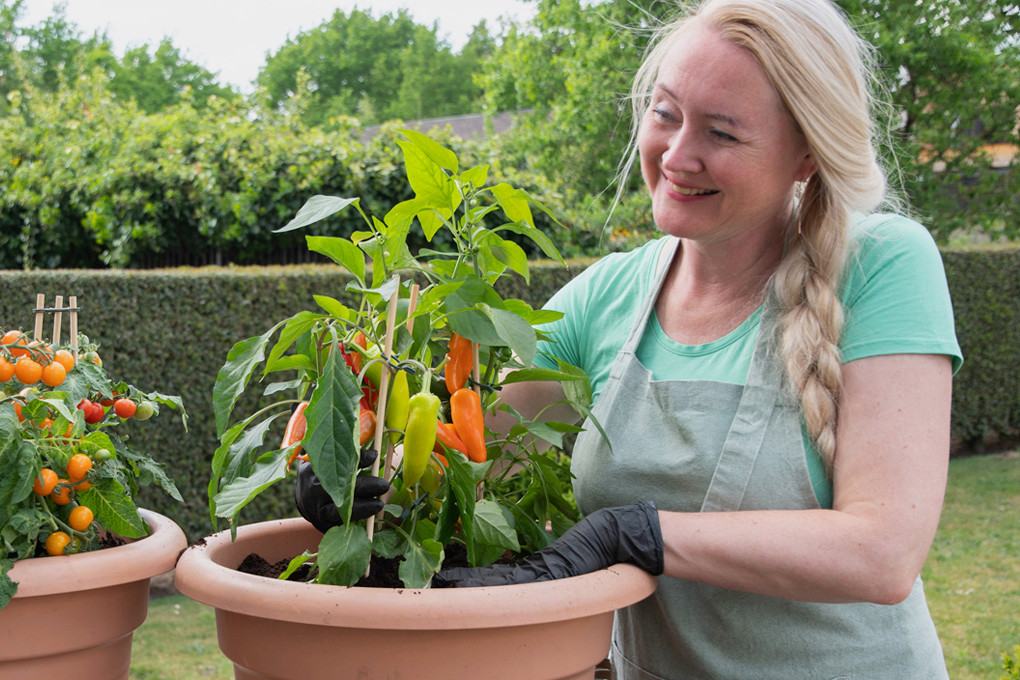
How to Grow Food Using a Container Garden: A Step-by-Step Guide
Posted by Sunshine Chapman on Sep 9th 2024
Container gardening offers a versatile and manageable way to grow fresh, nutritious food, even if you have limited space. Whether you have a small balcony, a tiny backyard, or even just a sunny windowsill, container gardening allows you to cultivate a variety of vegetables, herbs, and fruits. Here’s a comprehensive guide to help you get started with growing food in containers.
1. Choose the Right Containers
Size Matters
The size of your container affects the growth and productivity of your plants. Larger containers provide more space for root development, which is crucial for many vegetables and herbs. For instance:
- Tomatoes: Opt for containers that are at least 18-24 inches in diameter.
- Leafy Greens: A container of 12 inches in diameter works well.
Material Choices
Containers come in various materials, each with its pros and cons:
- Plastic: Lightweight and affordable, but can retain heat.
- Clay/Terra Cotta: Attractive and breathable, but can dry out quickly.
- Wood: Durable and insulating, but may require maintenance to prevent rot.
2. Select the Right Soil
Quality Soil Mix
Use a high-quality potting mix rather than garden soil. Potting mixes are specially formulated to retain moisture, provide good drainage, and supply essential nutrients. Look for mixes labeled as “potting soil” or “container mix” that include ingredients like peat moss, vermiculite, or perlite.
Soil Preparation
For added fertility, mix in organic compost or well-rotted manure. This will enhance soil structure and provide nutrients for your plants.
3. Choose the Right Plants
Space-Efficient Options
Opt for plants that thrive in containers and suit your space constraints:
- Herbs: Basil, parsley, cilantro, and mint do well in smaller pots.
- Leafy Greens: Lettuce, spinach, and arugula are perfect for container gardening.
- Compact Vegetables: Bush tomatoes, peppers, and dwarf varieties of squash and cucumbers are excellent choices.
Seasonal Considerations
Choose plants suited to your climate and the season. For example, grow cool-season crops like lettuce and peas in spring or fall, and warm-season crops like tomatoes and peppers in summer.
4. Planting and Care
Planting Tips
- Plant Depth: Follow seed packet or plant tag instructions for planting depth. Generally, plant seeds at a depth of 2-3 times their size.
- Spacing: Ensure adequate spacing between plants to prevent overcrowding and promote healthy growth.
Watering
Container plants often require more frequent watering than those in garden beds due to quicker soil drying. Check soil moisture daily and water when the top inch of soil feels dry. Ensure containers have drainage holes to prevent waterlogging.
Fertilizing
Container plants can deplete soil nutrients quickly, so regular fertilization is key. Use a balanced, water-soluble fertilizer every 4-6 weeks. Follow the package instructions for the correct dosage and application method.
5. Managing Pests and Diseases
Monitor Regularly
Inspect your plants regularly for signs of pests or diseases. Common pests include aphids, spider mites, and whiteflies. Use organic insecticidal soap or neem oil to control them.
Preventative Measures
- Good Hygiene: Remove any diseased or dead plant material promptly.
- Companion Planting: Plant herbs like basil and marigolds, which can deter pests naturally.
6. Harvesting and Enjoying Your Produce
Timing
Harvest your crops when they reach their peak ripeness for the best flavor and nutritional value. Leafy greens and herbs can be harvested continuously by picking outer leaves or cutting stems.
Continuous Harvest
To keep your container garden productive, practice successive planting. Sow new seeds or transplant seedlings every few weeks to ensure a continuous supply of fresh produce.
Container gardening is an accessible and rewarding way to grow your own food, regardless of your space constraints. By choosing the right containers, soil, and plants, and providing proper care, you can enjoy a thriving garden full of fresh herbs, vegetables, and fruits. With a little effort and attention, your container garden will not only beautify your space but also provide you with delicious, homegrown produce. Happy gardening!